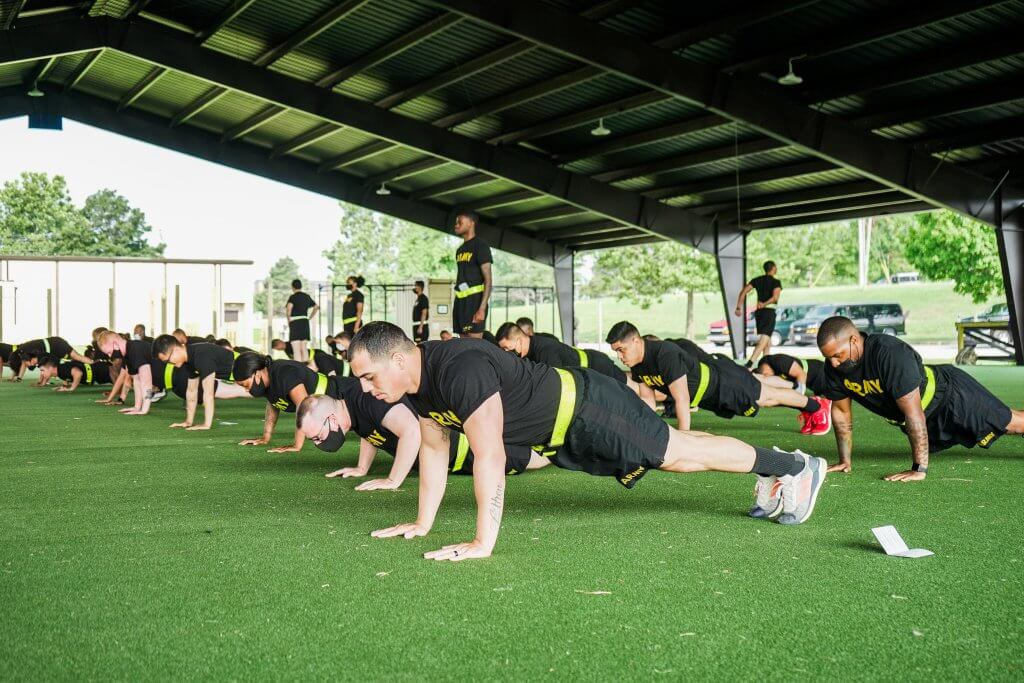Two years after the Army kicked off a holistic health program that values overall wellness — good sleep habits, proper nutrition, mental and spiritual needs — soldiers are learning to achieve peak performance beyond physical fitness.
The Holistic Health and Fitness (H2F) system began in late 2020, a new approach to individual readiness that set out to “change the Army’s culture of health and fitness.”
“When you keep pushing people beyond their physical needs, without addressing their other needs, it results in injury,” said Army Reserve Capt. Alex Morrow, the H2F Integration Team (HIT) lead. “You get more physically fit through recovery. You can’t push if you are not taking care of yourself properly.”
Proper care became a priority when the Army recognized a problem with soldier wellness.
“The capability of the Total Army on today’s battlefield is threatened by poor health and lack of physical readiness,” noted Chairman of the Joint Chiefs of Staff Gen. Mark Milley in the introduction to a public report released during the implementation of H2F.
The report cited data showing that, in early 2020, nearly 60,000 soldiers were not deployable, and 55% of active component soldiers sustained a musculoskeletal injury each year.
Amos Mansfield, the H2F Integration Team program director, said H2F is the Army’s effort to put people first and maximize soldier performance, including preventing injury and focusing on a well-rounded approach to health that is preventive in nature.
“If you take care of the people, it’s going to be forward-leaning,” he said. “It will allow them [soldiers] to fight, win and come home safe.”
Both Amos and Mansfield work with brigades to provide onboarding, training, support for tactical strength and conditioning and allied health professionals in positions across the Army. They are part of the coordination element as the Army rolls out the H2F system throughout the force. The program arrived at 28 brigades in 2021, and Mansfield said the Army is now working to bring it to 10-12 more per year.
RELATED: With RunDNA, airmen take strides to improve running, prevent injury
“Human performance teams” in each brigade include athletic trainers, strength coaches, nutritionists, dietitians, resilience and recovery specialists, physical therapists, occupational therapists and a chaplain.
“These are the components of a well-rounded soldier,” Mansfield said. “And also a well-rounded person.”
Beth Bearden, a military spouse and H2F human performance team member, works first-hand as a strength and conditioning coach for 500 soldiers per week on the 11th Air Defense Artillery Brigade at Fort Bliss, Texas. She said her trainees are beginning to embrace the goals of the program.
“We are getting so much positive feedback,” she said. “The soldiers really like it. They have needed this kind of attention and this kind of care for such a long time, especially the little things like recovery and learning how to breathe better during the day to help relieve stress. Those little tools are just priceless because some of these soldiers never learned how to handle or manage stress on the job.”
Bearden said another benefit to H2F is the ability to individualize a program for soldiers depending on their personal goals — minimize pain, get into selection school, become a paratrooper, etc. She pointed out that needs vary greatly, and she works with soldiers with a wide range of fitness levels.
“Some people are a novice, just like every other person in the room, and then somebody who’s been in the Special Forces, they’re like athletes and need performance enhancement,” Bearden said. “So, soldiers run the gamut, just like any population, and they have to be treated like that. I think that most strength and conditioning coaches, when they come in, they assume they’re just going to be working with Captain America.”
Morrow has also seen the initial impacts of H2F, primarily through program personalization, he said.
“I have been told by a soldier that this was the first time in his nine-year career that he felt that the Army has cared about the individual,” he said.

